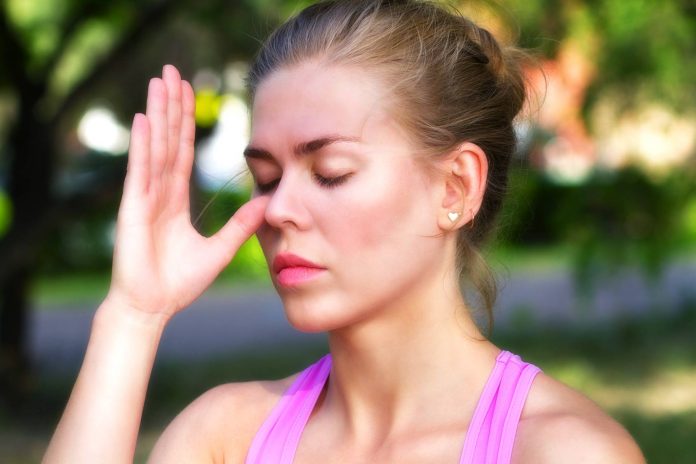If you find it difficult to fall asleep, you’re not alone.
Our busy and fast-paced society can make it difficult to unwind, calm down, and get restful sleep. Our lives are filled with:
homework
long work days
financial strains
parenting burnout
other emotionally exhausting situations
When it’s hard to sleep, focusing on your breath may help.
Let’s take a look at some breathing exercises to calm your mind and body to help you fall asleep.
Things to remember before getting started
Although there are a number of breathing exercises you can try to relax and fall asleep, a few basic principles apply to all of them.
It’s always a good idea to close your eyes, which may help you shut out distractions. Focus on your breathing and think about the healing power of your breath.
Each of these eight different exercises has slightly different benefits. Try them and see which one is the best match for you.
Soon you’ll be sleeping like a baby.
1. 4-7-8 breathing technique
Here’s how to practice the 4-7-8 breathing technique:
Allow your lips to part gently.
Exhale completely, making a breathy whoosh sound as you do.
Press your lips together as you silently inhale through the nose for a count of 4 seconds.
Hold your breath for a count of 7 seconds.
Exhale again for a full 8 seconds, making a whooshing sound throughout.
Repeat 4 times when you first start. Eventually, work up to 8 repetitions.
Dr. Andrew Weil developed this technique as a variation of pranayama, an ancient yoga technique that helps people relax as it replenishes oxygen in the body.
2. Bhramari pranayama breathing exercise
These steps can help you perform the original Bhramari pranayama breathing exercise:
Close your eyes and breathe deeply in and out.
Cover your ears with your hands.
Place each index finger above your eyebrows and the rest of your fingers over your eyes.
Next, put gentle pressure on the sides of your nose and focus on your brow area.
Keep your mouth closed and breathe out slowly through your nose, making the humming “Om” sound.
Repeat the process 5 times.
A 2017 research review showed that Bhramari pranayama may quickly reduce breathing and heart rate. This tends to be calming and can prepare your body for sleep.
3. Three-part breathing exercise
To practice the three-part breathing exercise, follow these three steps:
Take a long, deep inhale.
Exhale fully while focusing intently on your body and how it feels.
After doing this a few times, slow down your exhale so that it’s twice as long as you inhale.
Some people prefer this technique over others because of its sheer simplicity.
4. Diaphragmatic breathing exercise
To perform diaphragmatic breathing exercises:
Lie on your back and either bend your knees over a pillow or sit in a chair.
Place one hand flat against your chest and the other on your stomach.
Take slow, deep breaths through your nose, keeping the hand on your chest still as the hand on your stomach rises and falls with your breaths.
Next, breathe slowly through pursed lips.
Eventually, you want to be able to breathe in and out without your chest moving.
This technique slows your breathing and decreases your oxygen needs as it strengthens your diaphragm.
5. Alternate nasal breathing exercise
Here are the steps for the alternate nasal or alternate nostril breathing exercise, also called Nadi shodhana pranayama:
Sit with your legs crossed.
Place your left hand on your knee and your right thumb against your nose.
Exhale fully and then close the right nostril.
Inhale through your left nostril.
Open your right nostril and exhale through it while closing the left.
Continue this rotation for 5 minutes, finishing by exhaling through your left nostril.
A 2013 study reported that people who tried nasal breathing exercises felt less stressed afterward.
6. Buteyko breathing
Buteyko breathing, named after the doctor who created the technique, can help you manage your breathing.
To practice Buteyko breathing for sleep:
Sit in bed with your mouth gently closed (not pursed) and breathe through your nose at a natural pace for about 30 seconds.
Breathe a bit more intentionally in and out through your nose once.
Gently pinch your nose closed with your thumb and forefinger, keeping your mouth closed as well, until you feel that you need to take a breath again.
With your mouth still closed, take a deep breath in and out through your nose again.
Many people don’t realize that they’re hyperventilating. This exercise helps you to reset to a typical breathing rhythm.
7. The Papworth method
The Papworth method combines multiple breathing techniques. You focus on your diaphragm to breathe more naturally:
Sit up straight, perhaps in bed, if using this to fall asleep.
Take deep, methodical breaths in and out, counting to 4 with each inhale — through your mouth or nose — and each exhale, which should be through your nose.
Focus on your abdomen rising and falling, and listen for your breath sounds to come from your stomach.
This relaxing method is helpful for reducing the habits of yawning and sighing.
8. Box breathing
During box breathing, you want to focus intently on the oxygen you bring in and push out:
Sit with your back straight, breathe in, and then try to push all the air out of your lungs as you exhale.
Inhale slowly through your nose and count to 4 in your head, filling your lungs with more air with each number.
Hold your breath and count to 4 in your head.
Slowly exhale through your mouth, focusing on getting all the oxygen out of your lungs.
Box breathing is a common technique during meditation. Meditation has a variety of known benefits for your overall health, such as helping you find mental focus and relax.






























